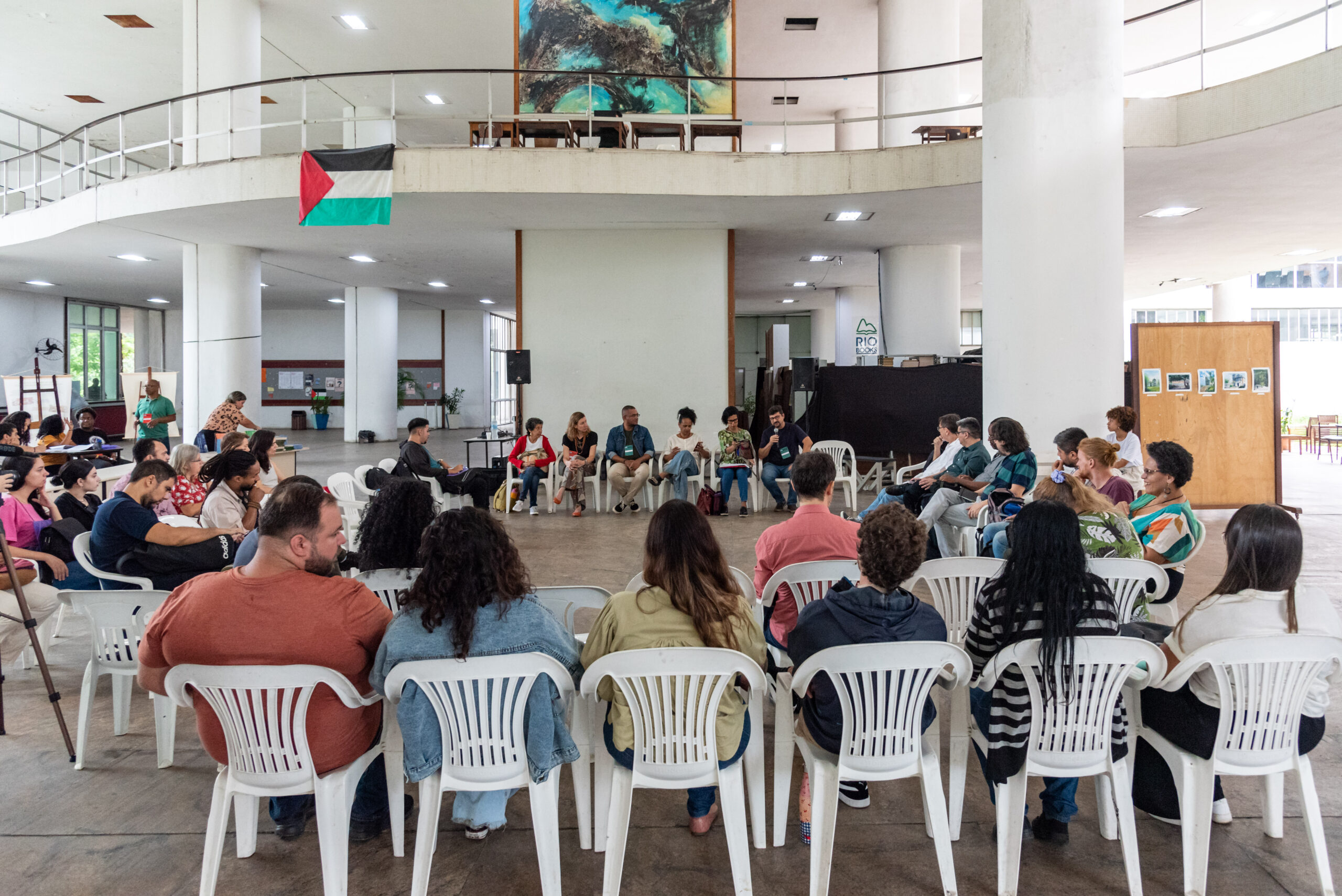
Clique aqui para Português
Invited by the Urban and Regional Planning and Research Institute (IPPUR) at the Federal University of Rio de Janeiro (UFRJ) and supported by the Research Support Foundation for the State of Rio de Janeiro (FAPERJ), on December 11, museum members of the Sustainable Favela Network (SFN)’s Climate Memory Working Group took part in the “Brazil’s Past Urbanizations” discussion panel. Panelists included: Antônio Carlos Vieira of the Maré Museum, Bruno Almeida of the Historic Orientation and Research Nucleus of Santa Cruz (NOPH), Maria da Penha Macena of the Evictions Museum in Vila Autódromo, Rose Firmino of the Sankofa Museum in Rocinha, and Márcia Souza of the Favela Museum (MUF) in Pavão-Pavãozinho/Cantagalo. On display alongside the panel was the Favela Climate Memory exhibition on the ground level of the university’s Jorge Machado Moreira Building, from 9am-5pm.
Favela Climate Memory Exhibition Meets Academia
The Favela Climate Memory exhibition organized by community museum members of the Sustainable Favela Network (SFN), was displayed during the 28th IPPUR Week at the Federal University of Rio de Janeiro. Comprising a rich tapestry of memories and stories, narrated from the perspective of residents of five of Rio de Janeiro’s favelas, the exhibition took the form of banners hung on a bamboo clothesline with pegs alongside a number of other exhibition materials. It gives a brief summary of the favela climate memory circles that took place in the participating community museums: Maré Museum in Complexo da Maré; Sankofa Museum in Rocinha; Historic Orientation and Research Nucleus of Santa Cruz (NOPH) in Antares; Favela Museum (MUF) in Pavão-Pavãozinho and Cantagalo; and the Memory Nucleus of Vidigal.
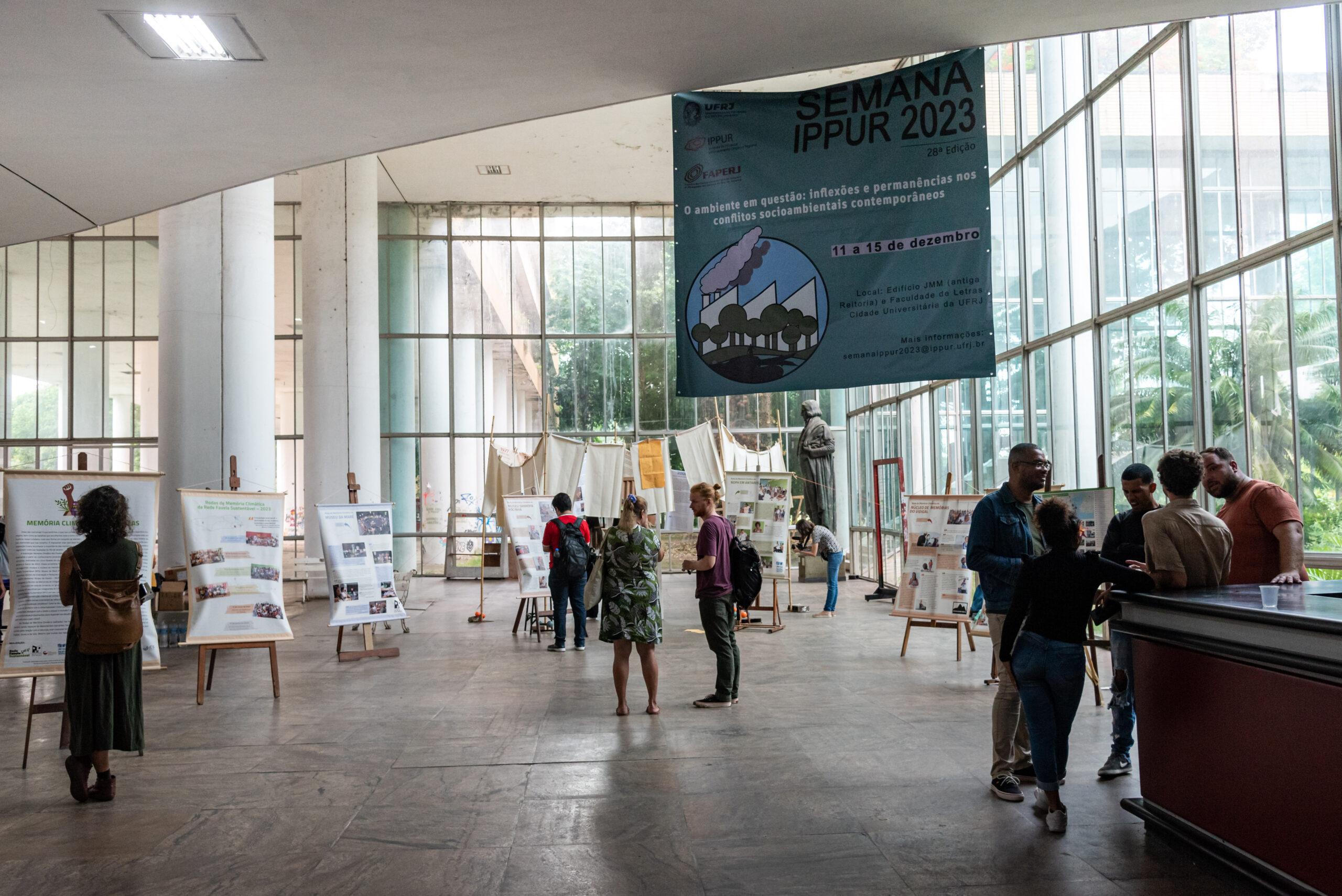
In addition to banners, the exhibition features a circular timeline that chronicles the most notable events in the histories of the participating favelas. These narratives come directly from residents who were present during the climate memory circles. A final structure completes the exhibition’s circuit: the “Well of Memories” installation, created by visual artist Evânia de Paula from Vidigal. The well includes approximately 100 photographs with captions, offering a moment for sharing local memories and histories from the participating communities.
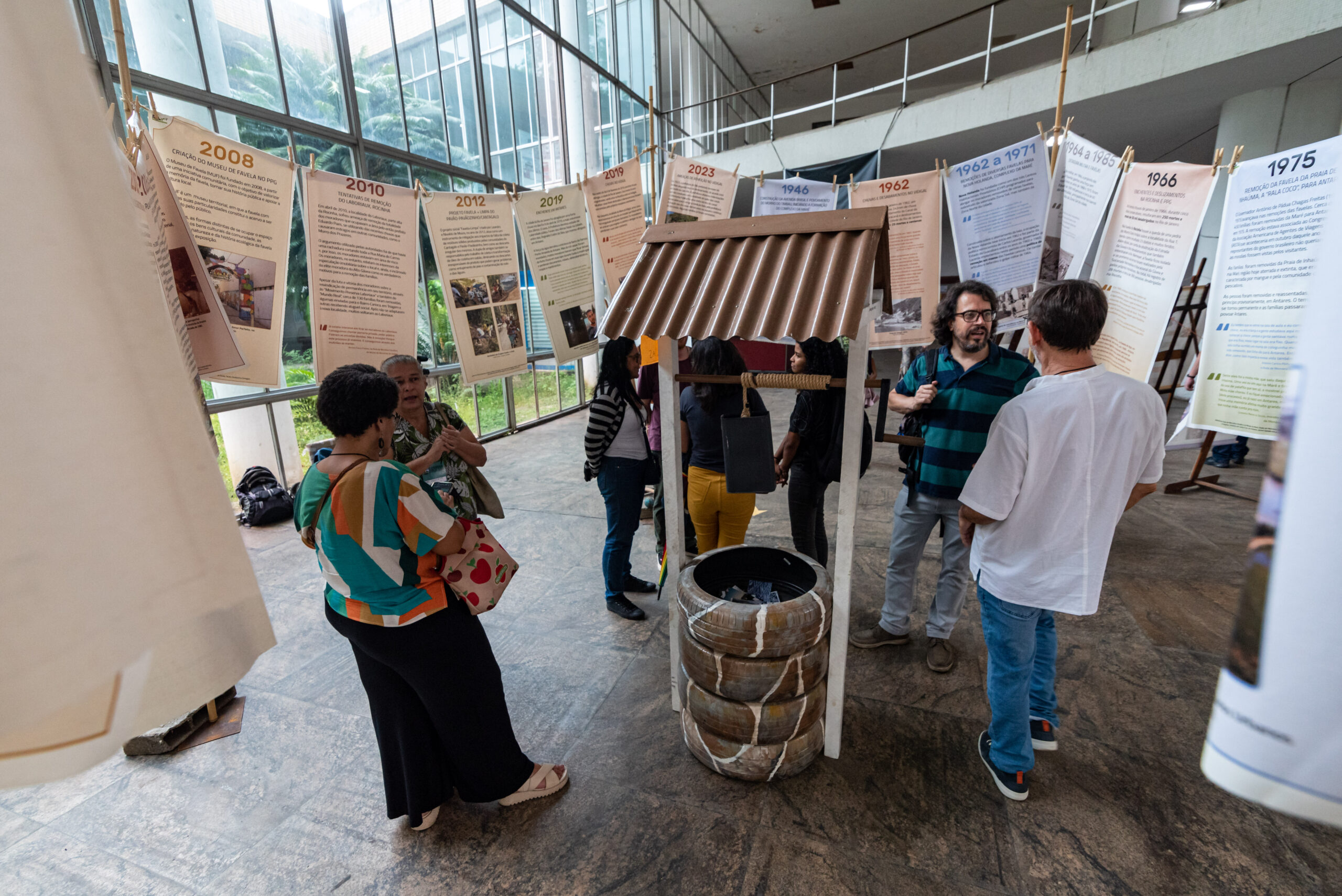
As soon as visitors entered the hall of the Jorge Machado Moreira Building at IPPUR, they were greeted by the exhibition’s installations. The exchanges between students, professors and representatives of the favela museums had already begun. During the visit, the mediation between what was observed and the narratives from museum representatives further enriched the experience.
Favela Museums in the Professor’s Seat
This year, IPPUR Week addressed the theme: “The Environment in Question: Inflections and Permanence in Contemporary Socio-environmental Conflicts.” The special session “Favela Climate Memory” mediated by Professor Taísa Sanches saw the participation of five representatives from the favela museums featured in the Favela Climate Memory exhibition.
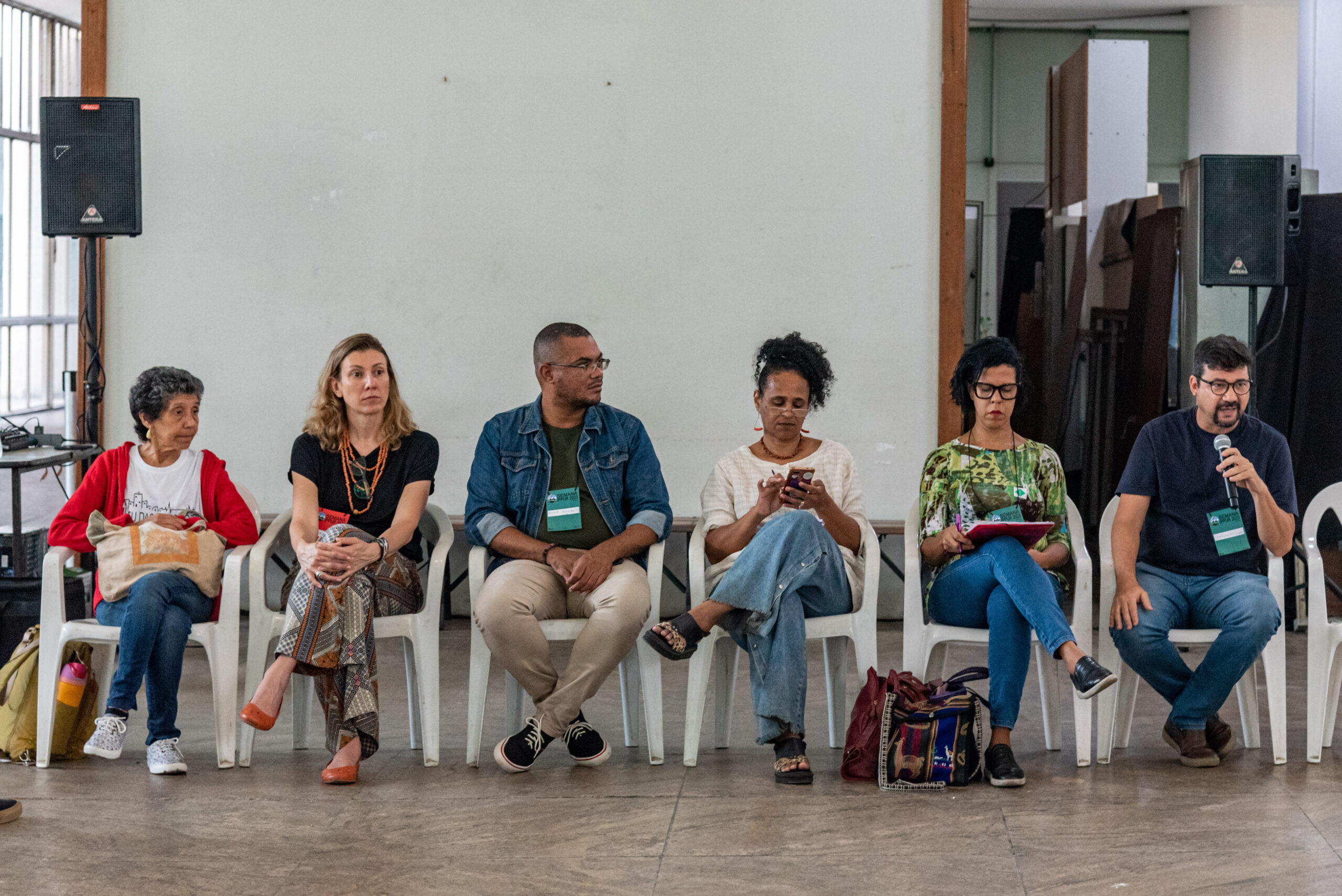
The discussion circle’s objective was to present the Sustainable Favela Network and the favela museums that created the Favela Climate Memory exhibition.
Maria da Penha Macena of the Evictions Museum in Vila Autódromo explained the context in which the museum was created, during the period of widespread pre-Olympic evictions. The museum came about with two purposes: to preserve the memories of a community that once comprised 700 families, now reduced to 20; and to serve as an instrument of struggle against evictions. She spoke on her experience during the climate memory circles in other communities.
“It was an incredible experience because the stories are very similar. Actually, they’re identical. The story of the working-class Brazilian repeats itself because what is left for us are the favelas. And then, when we build in these spaces, the government thinks it has the right to remove us.” — Maria da Penha
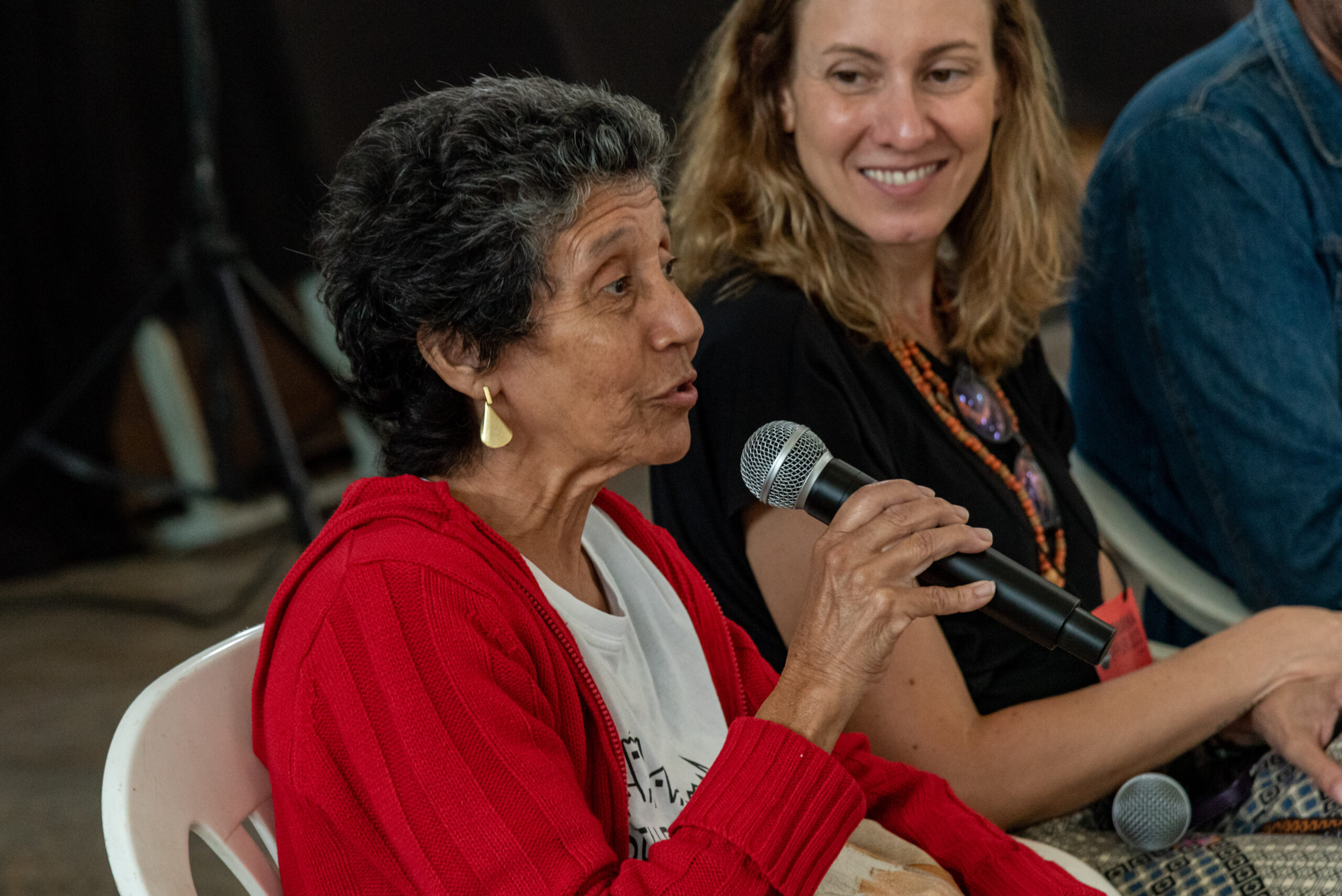
While the Evictions Museum didn’t host a climate memory circle in its own territory, it was the one which launched the original Favela Climate Memory exhibition.
At the event, the question “what is climate memory?” was debated, with a noteworthy response from Bruno Almeida, head of the Historic Orientation and Research Nucleus of Santa Cruz (NOPH) which realized its climate memory circle in the favela of Antares, Santa Cruz.
“How, over the course of thirty years, have favelas related to or been impacted by climate change? This is a recurring question, especially in terms of floods and heat… As per our methodology in the circles, the favela museums [proposed] four questions [(1) What is climate change? (2) How did the occupation of the favela take place and what is the area’s relationship with the climate and nature? (3) How do climate and environmental issues relate to housing access and rights? and (4) What knowledge has the community developed to respond to the challenges posed by nature and climate?]. In all the [climate memory] circles, these questions were explored, and communities proposed solutions. This is climate memory—it’s the recollection of ongoing events that communities have experienced and responded to [over time].” — Bruno Almeida
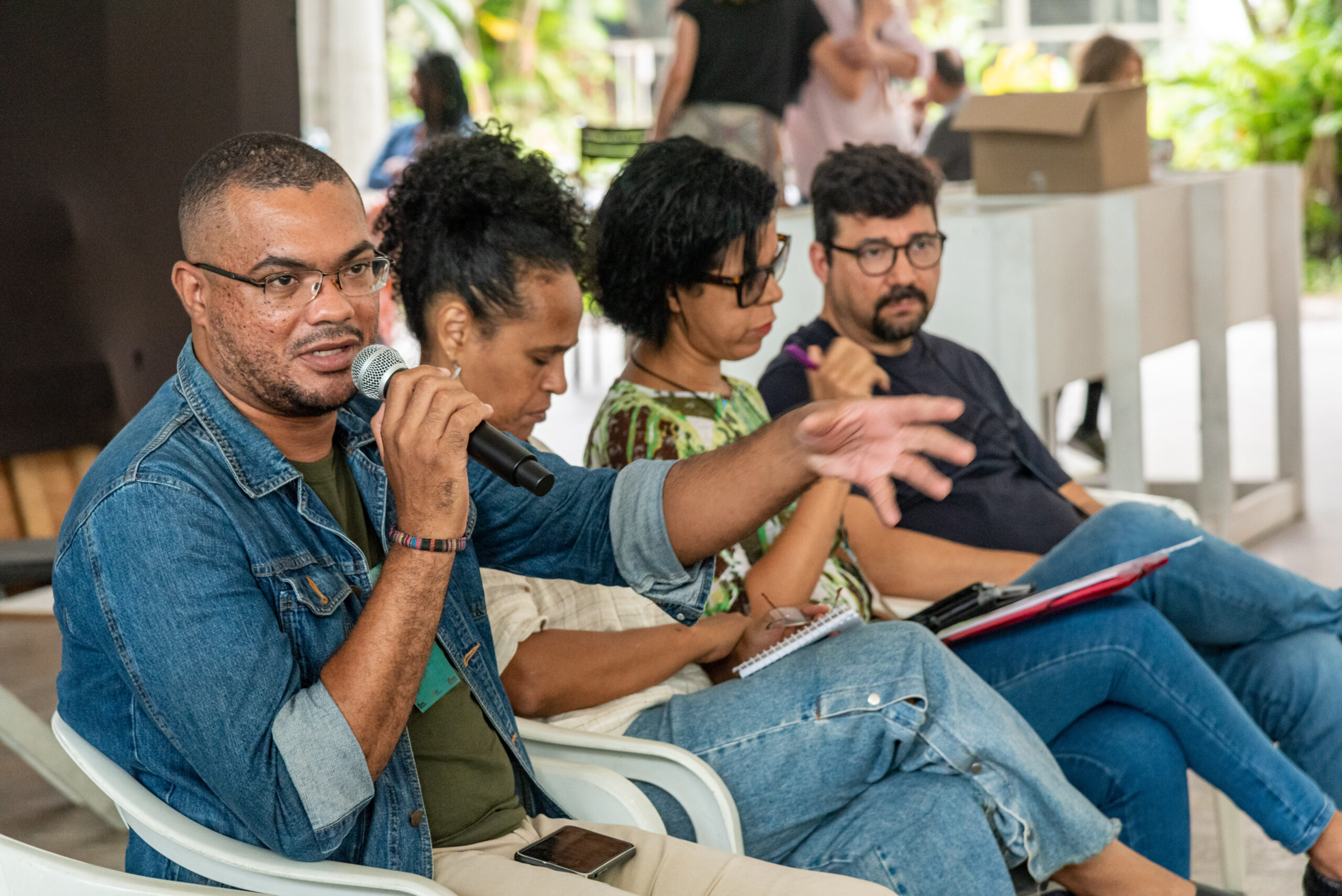
Márcia Souza of the Favela Museum (MUF), shared her perceptions, along with those of fellow residents of Pavão-Pavãozinho/Cantagalo, on how the community manages (or doesn’t) to deal with climate change.
“What we noticed a lot in Cantagalo, is that both young and older people have this feeling of ‘how do we tackle them?’ [issues relating to climate change]… And this wasn’t any different in the other circles.
All of these favelas and communities intertwine. I encountered people in Maré who had lived in Cantagalo, and people in Antares who had come from Cantagalo [from where they’d been evicted] due to the rain, as there were frequent landslides there… Each time we told our stories, it was very touching… We are the same, even in different areas. We live the same situations amid this whole diversity of locations, memories, and histories.” — Márcia Souza
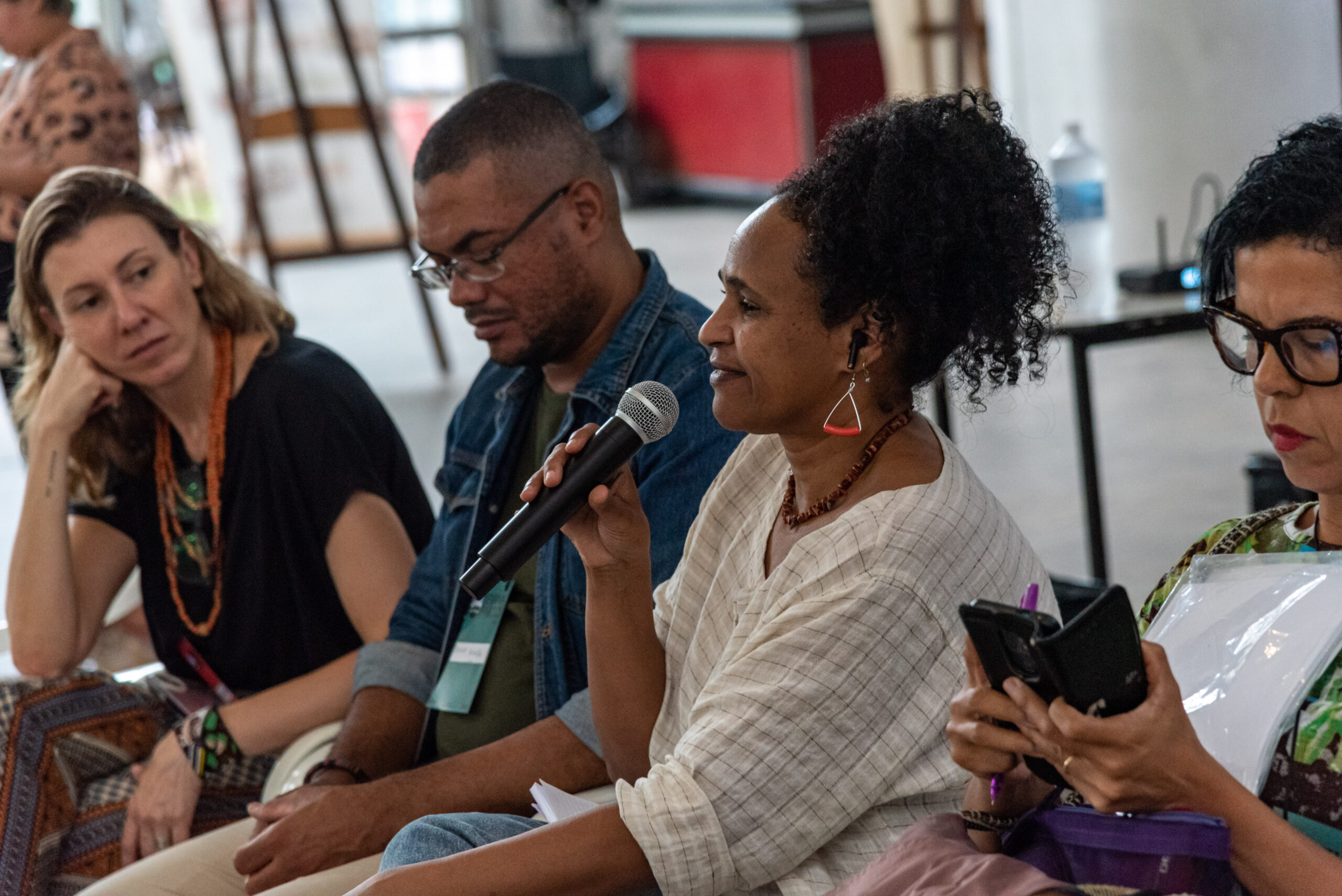
Rose Firmino, from the Sankofa Museum of Rocinha, emphasizes the circles’ educational purpose for the residents who participated in the activities.
“The favela is my home, my place of memory and that’s what we’re doing here when we set up this exhibition, when we form a circle and talk about the favela. We start to resignify the favela, and then we start to educate, not because people aren’t educated, but to bring knowledge that makes all the difference in the place where you live.” — Rose Firmino
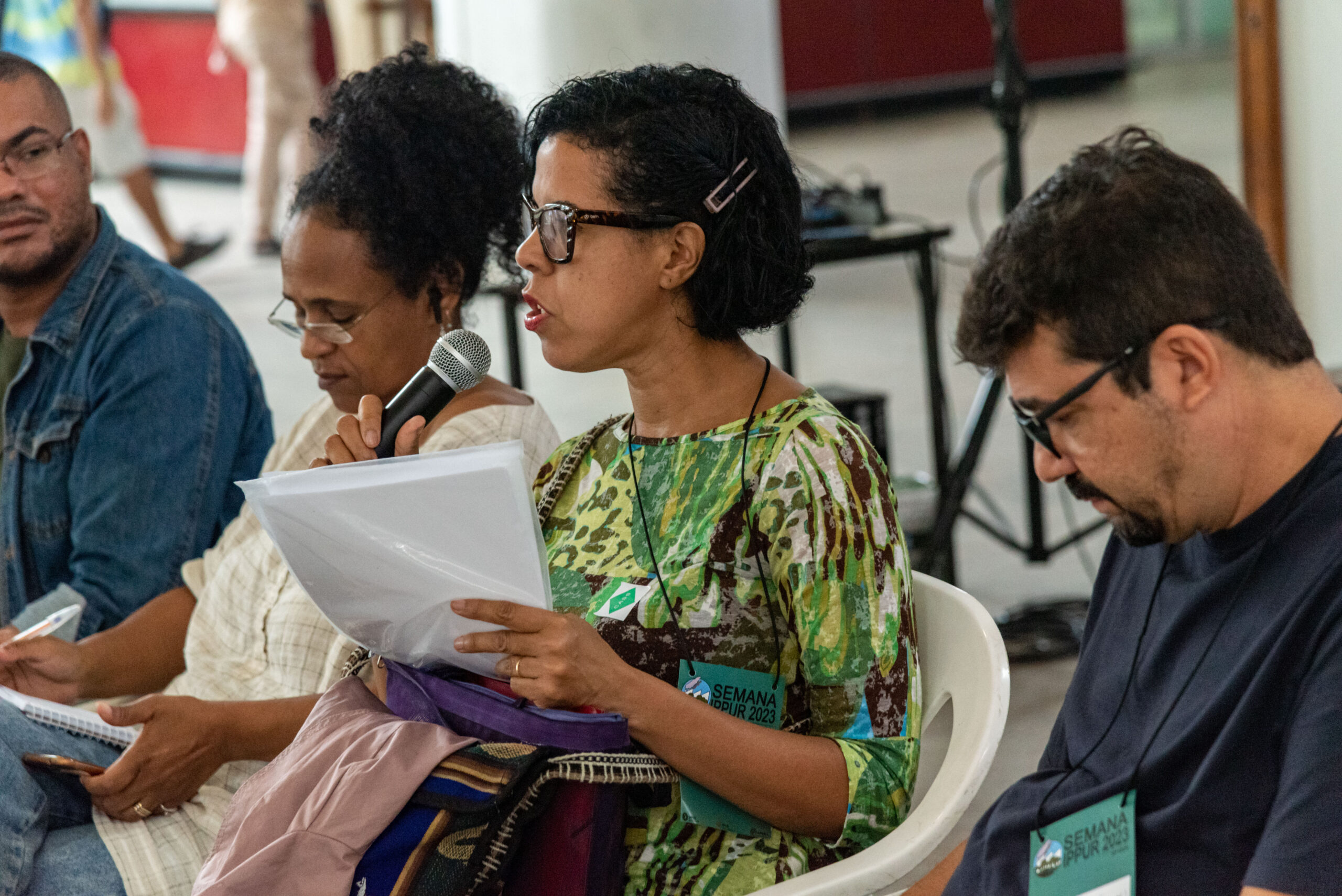
Antônio Carlos Vieira, from the Maré Museum, emphasized that the reflections from the IPPUR special session are essential because they come from the favela residents themselves. According to him, this is important because favela residents are often appointed as the great villains of environmental issues in the shallow wisdom of conventional discourse. Events like this prove the opposite: favelas are incubators for climate solutions and can actually teach universities.
“We know that the entire process of forming and building cities is a process of exclusion. So, this panel has a fundamental role, which is to put things in their place. The favela resident is not the generator of great urban problems. Actually, they are the great victims of an entire process that capitalism has imposed over the course of the 20th century. And, now that we’re in the 21st century, planners don’t really know what to do with the issues that exclusive cities, built in an authoritarian way, have generated… it’s inequality in every sense… They transformed a basic right, housing, into merchandise… and it acquires another dimension when we’re discussing the issue of global warming and climate change, which will have much graver repercussions for these residents who have had their right to housing turned precarious.” — Antônio Carlos Vieira
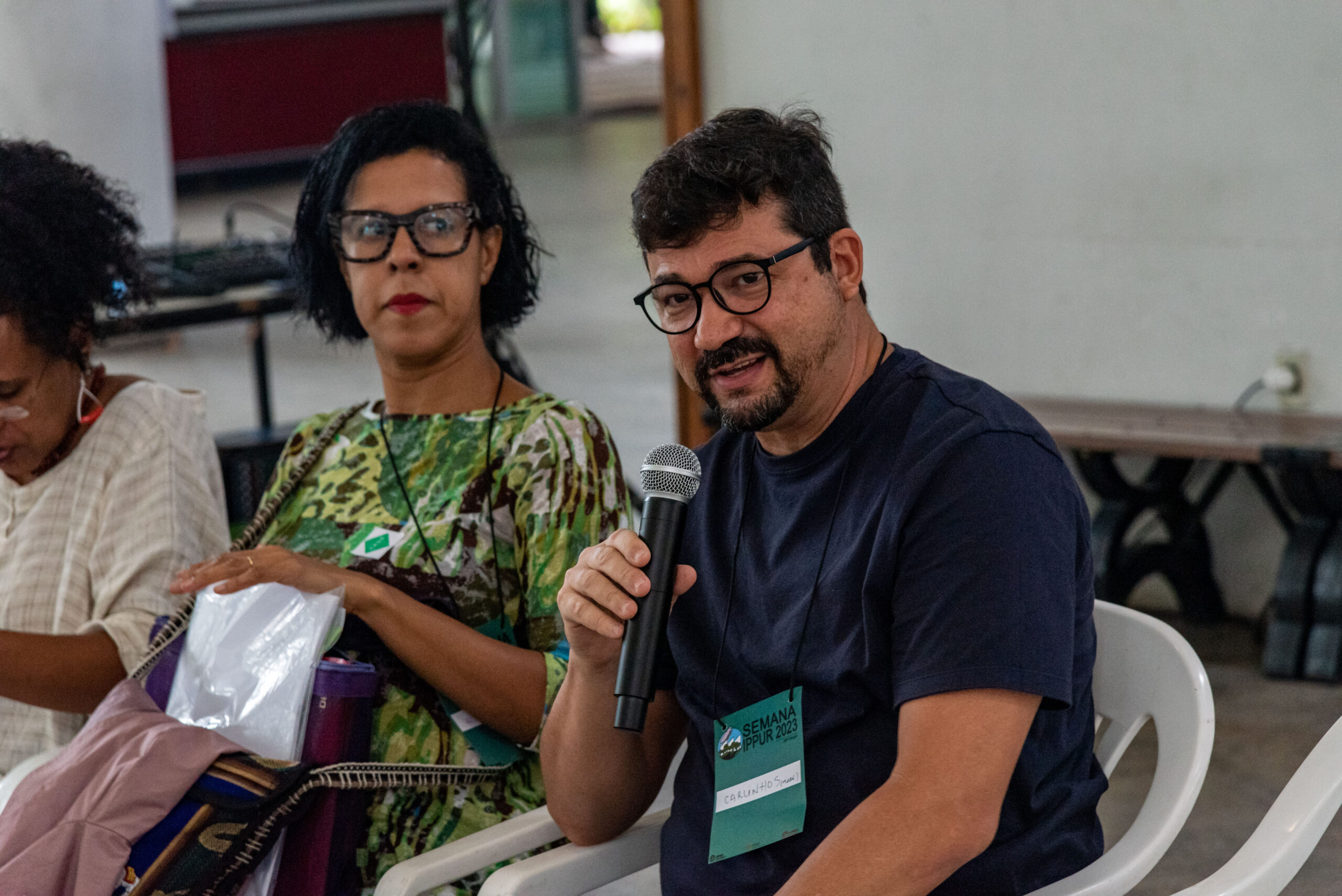
Vieira offers an extensive retrospective of the countless processes of eviction, with the alleged objective of upgrading and revitalizing the city—a kind of “public policy of eviction and exclusion” towards many of Rio’s favelas. Their populations were mostly relocated to the West Zone, to housing projects without sufficient structure or urban mobility, and they had their emotional ties to their areas, neighbors, and memories severed.
“We’re here today at a university of planning and architecture… This university could have a different role in the construction of the city if there were effective public policies. It’s no use if we do miraculous things: you have to do them with the residents… because they are the people who are there on a daily basis, who live there… So, it’s no use to have an intellectual come in with a 3D blueprint if this isn’t talked over and built together with the residents. That’s why all of our housing policies have been disastrous. We’re reaping what was sown.” — Antônio Carlos Vieira
Knowing How to Listen to What the Favela Has to Say
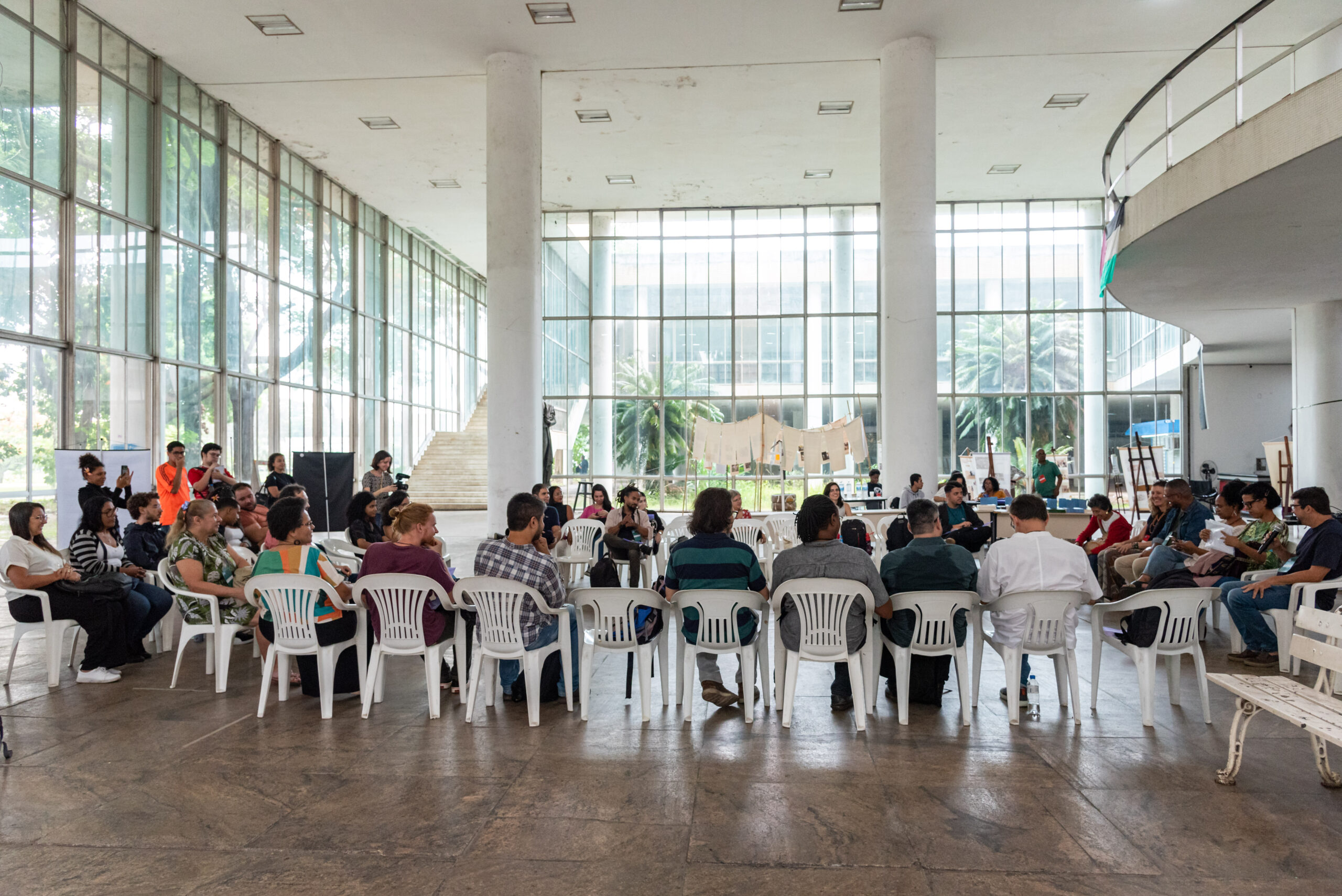
The sharing of experiences and knowledge at the IPPUR event illustrates the crucial need to preserve and narrate the stories of favelas’ formation in large cities and their longstanding fight against climate change. The presence of favela museum leadership and the Sustainable Favela Network in an academic context, both dedicated to producing memories, served as a means for favela voices to educate the university. The exhibition, visited by students and professors, in association with the talks given during the discussion circle, reinforces the potencial that favelas have as they organically build their knowledge and present it from the inside out.
Don’t miss the album by Bárbara Dias on Flickr:
About the author and photographer: Bárbara Dias was born and raised in Bangu, in Rio’s West Zone. She has a degree in Biological Sciences, a master’s in Environmental Education, and has been a public school teacher since 2006. She is a photojournalist and also works with documentary photography. She is a popular communicator for Núcleo Piratininga de Comunicação (NPC) and co-founder of Coletivo Fotoguerrilha.
*The Sustainable Favela Network (SFN) and RioOnWatch are both initiatives managed by NGO Catalytic Communities (CatComm).

